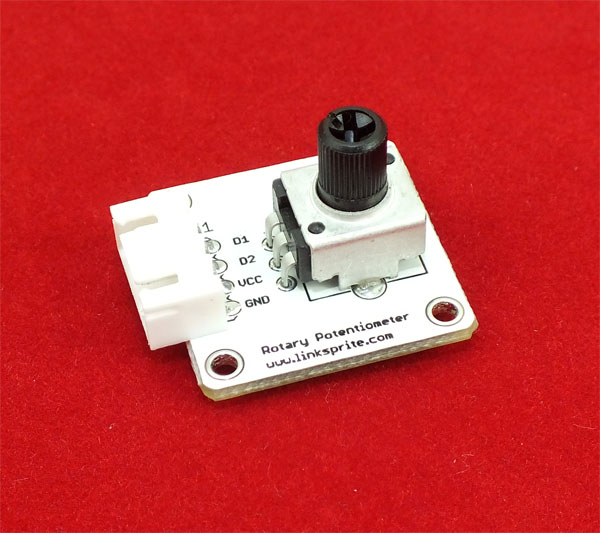Difference between revisions of "Rotary Potentiometer Module"
Qian.zhang (talk | contribs) |
Qian.zhang (talk | contribs) (→Application Ideas) |
||
| Line 31: | Line 31: | ||
</syntaxhighlight> | </syntaxhighlight> | ||
| − | [[File: | + | [[File:Rotary link.jpg]] |
==How to buy== | ==How to buy== | ||
Here to buy Rotary Potentiometer Module on [http://store.linksprite.com/rotary-potentiometer-module-of-linker-kit-for-pcduino-arduino/ store] | Here to buy Rotary Potentiometer Module on [http://store.linksprite.com/rotary-potentiometer-module-of-linker-kit-for-pcduino-arduino/ store] | ||
Revision as of 03:13, 22 April 2014
Introduction
The Linker Rotary Potentiometer Module produces analog output between 0 and Vcc (5V DC with Arduino) on its D1 connector. The D2 connector is not used. The angular range is 300 degrees with a linear change in value. The resistance value is 10kΩ, perfect for Arduino use.
Schematics
Application Ideas
test <syntaxhighlight lang="c"> int adcPin = A0; // select the input pin for the potentiometer int ledPin = 5; // select the pin for the LED int adcIn = 0; // variable to store the value coming from the sensor
void setup() {
Serial.begin(9600); // init serial to 9600b/s
pinMode(ledPin, OUTPUT); // set ledPin to OUTPUT
Serial.println("Rotary Potentiometer Test Code!!");
}
void loop() {
// read the value from the sensor: adcIn = analogRead(adcPin); if(adcIn >= 500) digitalWrite(ledPin,HIGH); // if adc in > 500, led light else digitalWrite(ledPin, LOW); Serial.println(adcIn); delay(100);
} </syntaxhighlight>
How to buy
Here to buy Rotary Potentiometer Module on store

